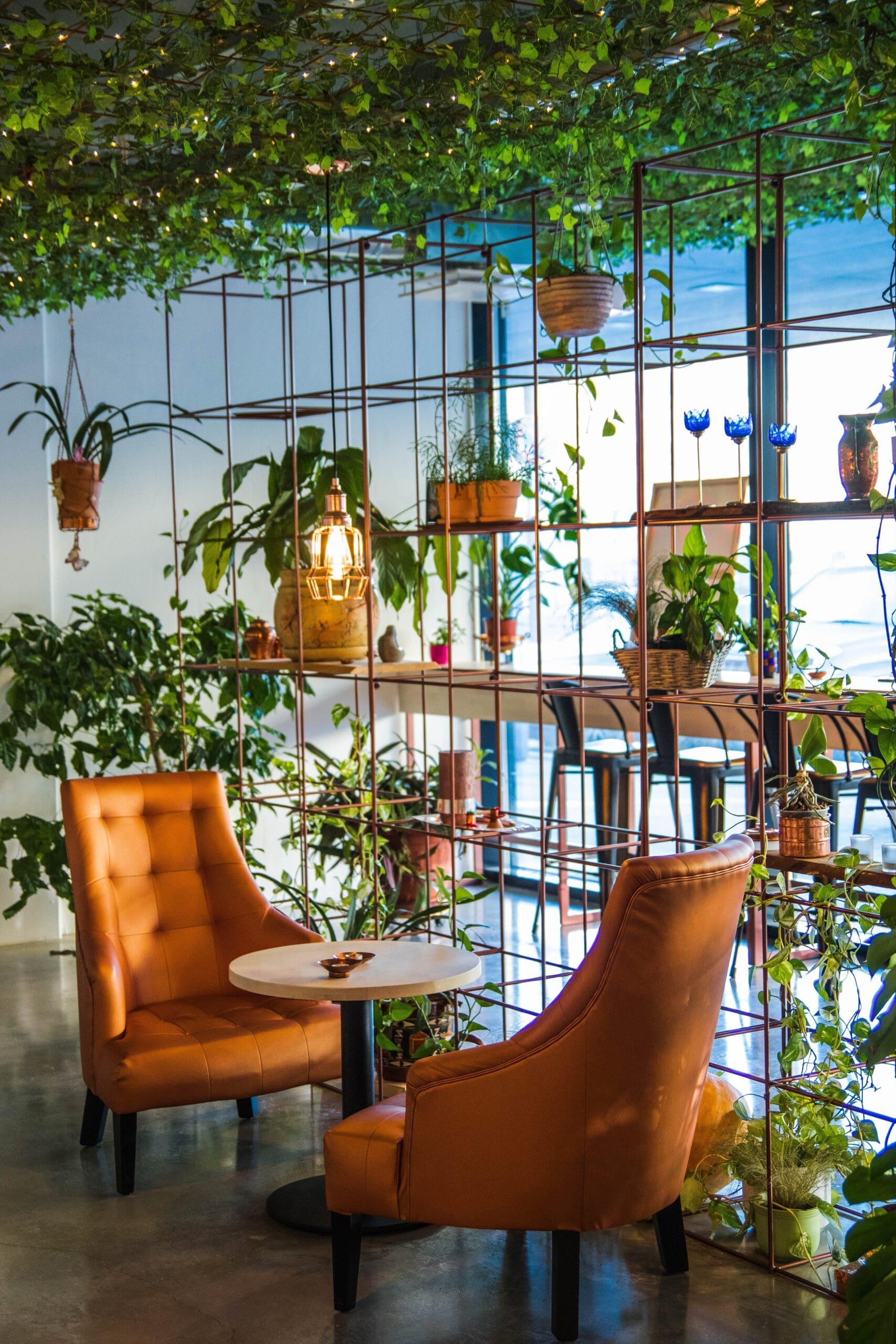Biophilic design is an approach to interior and architectural design that seeks to connect people more closely to nature. It incorporates elements of the natural world into the built environment to enhance the well-being, productivity, and overall experience of those occupying the space. This design philosophy is based on the idea that humans have an innate connection to nature, and integrating natural elements into our surroundings can positively impact our physical and mental health.
Key principles of biophilic design include:
- Natural Light: Maximizing natural light in a space is a fundamental aspect of biophilic design. This can involve large windows, skylights, and other strategies to bring in sunlight, which has been shown to improve mood and regulate circadian rhythms.
- Greenery and Plants: Incorporating live plants and greenery into interior spaces is a hallmark of biophilic design. Plants not only improve air quality but also bring a sense of nature indoors, promoting relaxation and stress reduction.
- Natural Materials: Using natural materials such as wood, stone, and bamboo in construction and furnishings helps create a connection to the outdoors. The tactile experience of interacting with these materials can enhance the overall sensory experience.
- Water Features: The inclusion of water features, such as indoor fountains or aquariums, contributes to the calming and soothing effects associated with natural water elements.
- Views of Nature: Providing views of natural elements, whether it’s landscapes, greenery, or bodies of water, can have a positive impact. This can be achieved through thoughtful window placement and design.
- Organic Shapes and Patterns: Embracing organic shapes and patterns in design elements, such as furniture and decor, can mimic the randomness and irregularity found in nature.
- Dynamic and Varied Spaces: Creating dynamic and varied spaces that allow for flexibility and movement, rather than static and rigid layouts, reflects the diversity of natural environments.
Why is it trending?
Biophilic design is trending for several reasons:
- Well-Being and Mental Health: Research suggests that exposure to nature and natural elements positively influences mental well-being, reducing stress and enhancing cognitive function. As people become more conscious of mental health, the demand for designs that support well-being has increased.
- Urbanization and Disconnect from Nature: As more people live in urban environments with limited access to nature, the desire to reconnect with natural elements becomes stronger. Biophilic design helps bridge the gap between urban living and the natural world.
- Sustainability: The focus on sustainability in design aligns with biophilic principles. Using natural materials and energy-efficient strategies contributes to both sustainable and biophilic design goals.
How to incorporate biophilic design into spaces:
- Bring in Natural Light: Maximize natural light through large windows, skylights, and light-colored interiors.
- Introduce Greenery: Incorporate plants and greenery throughout the space, including potted plants, hanging planters, and vertical gardens.
- Use Natural Materials: Choose furniture, flooring, and finishes made from natural materials like wood, stone, and bamboo.
- Include Water Features: Consider adding indoor fountains, aquariums, or other water features to introduce the calming effects of water.
- Provide Views of Nature: Orient furniture and spaces to take advantage of outdoor views, and consider incorporating natural elements into window treatments.
- Embrace Organic Shapes and Patterns: Choose furniture and decor with organic shapes and patterns inspired by nature.
- Create Dynamic Spaces: Design spaces that allow for flexibility and movement, providing areas for different activities and experiences.
- Incorporate Biophilic Art: Choose artwork that depicts nature scenes or incorporates natural elements.
Incorporating biophilic design into your space doesn’t necessarily require a complete overhaul. Even small changes, such as adding plants, introducing natural materials, or rearranging furniture to optimize natural light, can make a significant difference in creating a biophilic environment. —Vita Daily

January 10th, 2024 at 5:39 pm
Sleep meditations help me. I’m Clutterqueen1 on Instagram.